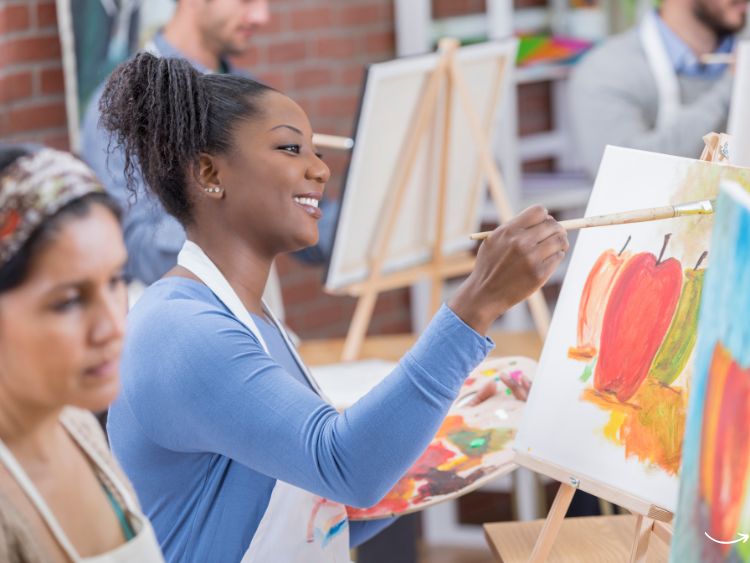When you think about majestic animals, horses undoubtedly come to mind. Their grace, power, and beauty have inspired artists for centuries. Horse painting, a timeless genre in art, captures the essence of these magnificent creatures in a way that photographs often cannot. Whether you’re an art enthusiast, an aspiring artist, or just curious about this fascinating subject, delving into the world of horse painting can be a rewarding experience. So, why is horse painting so captivating? Let’s trot through the history, techniques, and significance of this beloved art form.
The Historical Significance of Horse Painting
Ancient Beginnings
Horse painting isn’t a modern concept; it has roots that trace back to ancient civilizations. Cave paintings found in places like Lascaux, France, showcase some of the earliest depictions of horses. These prehistoric artists used simple yet powerful lines and pigments to portray their subjects. Their works remind us that humans have been fascinated by horses for thousands of years.
Renaissance Revival
Fast forward to the Renaissance, and we see a resurgence of interest in horse painting. Renowned artists like Leonardo da Vinci and Albrecht Dürer studied horse anatomy meticulously, ensuring their paintings were as realistic as possible. Da Vinci’s sketches, in particular, show a deep understanding of the horse’s musculature and movement, setting the stage for future artists to build upon.
The 18th and 19th Centuries
The 18th and 19th centuries were golden ages for horse painting, especially in Europe. Artists like George Stubbs, known as the “horse painter,” created incredibly detailed and lifelike portraits of horses. Stubbs’ work, often commissioned by wealthy patrons, captures the elegance and nobility of horses, cementing their status as symbols of power and prestige.
Techniques and Styles in Horse Painting
Realism
Realism is perhaps the most prevalent style in horse painting. Artists striving for realism pay close attention to anatomical accuracy, light, and shadow. They often spend hours studying their subjects, sometimes even visiting stables and racetracks to observe horses in motion. The result? Paintings that are so lifelike, you might expect the horse to gallop off the canvas.
Impressionism
Impressionist horse paintings, on the other hand, focus on capturing the essence and movement of the horse rather than minute details. Artists like Edgar Degas used bold brushstrokes and vibrant colors to depict horses in dynamic, energetic scenes. These paintings convey a sense of motion and spontaneity, celebrating the horse’s spirit rather than its physical form.
Abstract
Abstract horse paintings take a more modern approach, emphasizing shapes, colors, and textures over realistic representation. These works can be highly interpretative, inviting viewers to find their own meaning and connection to the subject. Abstract horse painting often highlights the artist’s personal style and emotional response to the horse.
Creating Your Own Horse Painting
Getting Started
Ready to create your own horse painting? Here are some steps to help you get started:
- Gather Your Supplies: You’ll need a canvas, paints (oil, acrylic, or watercolor), brushes, a palette, and reference images of horses.
- Study Horse Anatomy: Understanding the basic anatomy of a horse will help you create more accurate and dynamic paintings. Look at books, online resources, or even visit a local stable.
- Sketch Your Composition: Begin with a light sketch to map out your composition. Focus on the horse’s proportions and posture.
- Layer Your Paints: Start with the background and work your way forward, adding layers of color and detail. Remember to let each layer dry before adding the next.
Tips and Tricks
- Use Reference Photos: Having high-quality reference photos can make a significant difference. Look for images that highlight different poses and lighting conditions.
- Experiment with Colors: Don’t be afraid to play with colors. Even in realistic paintings, subtle color variations can add depth and interest.
- Practice, Practice, Practice: Like any skill, painting improves with practice. Don’t get discouraged if your first attempts aren’t perfect.
The Cultural Impact of Horse Painting
Symbolism and Meaning
Horses have long been symbols of freedom, power, and grace. In many cultures, they are associated with nobility and heroism. Horse paintings often reflect these themes, serving as reminders of these qualities. Whether in a stately portrait or a dynamic racing scene, horses in art evoke strong emotions and cultural significance.
Modern Applications
Today, horse painting continues to thrive. Modern artists explore new techniques and styles, pushing the boundaries of this traditional genre. Horse paintings are popular in home decor, adding a touch of elegance and dynamism to any space. They are also frequently seen in public art, commemorating historical events or celebrating community heritage.
FAQs About Horse Painting
What are the most popular styles of horse painting?
Realism, impressionism, and abstract are the most popular styles. Each offers a unique way to capture the beauty and spirit of horses.
Do I need to know how to draw to paint horses?
While drawing skills can be helpful, they are not strictly necessary. Many artists use tracing or projection techniques to outline their subjects before painting.
Can I use any type of paint for horse painting?
Yes, you can use oil, acrylic, or watercolor paints. Each type has its own advantages and challenges, so choose the one that suits your style and preference.
How can I improve my horse painting skills?
Practice regularly, study horse anatomy, and experiment with different techniques and styles. Attending art classes or workshops can also be beneficial.
Where can I find inspiration for horse paintings?
Look for inspiration in art books, galleries, online platforms like Pinterest and Instagram, and real-life experiences with horses.
Summary
Horse painting is a captivating and timeless art form that bridges the gap between the ancient and modern worlds. Whether you are an aspiring artist or a seasoned professional, the world of horse painting offers endless opportunities for creativity and expression. By understanding the history, techniques, and cultural significance of horse painting, you can appreciate and create works that celebrate the beauty and majesty of these incredible animals.
So, saddle up and start your artistic journey into the world of horse painting. With practice and passion, you can capture the grace and power of horses on canvas, creating art that resonates with viewers for generations to come.







